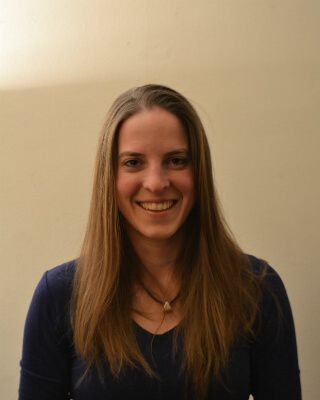Dr Katia Hiersemenzel

Katia completed her PhD in the field of molecular biology and super-resolution imaging. With a background in advanced microscopy, she subsequently took on the role as OCT application specialist with Leica Microsystems.
Tell us about your current job
I am an Application Specialist for the Optical Coherence Tomography (OCT) system, a recently established part of the product range of Leica Microsystems. OCT is the optical analogue of ultrasound and has a particular application to eye research. As an Application Specialist for the life science sector I provide the technical knowhow about the product and its bio imaging capacity. Working together with the Sales team, we bring the product to the customers. One perk of this job is that I am still very much in touch with science, communicating about the customers research and working together with the customer to set them up with the best possible system to help them reach their goals.
How is your work making a difference in the real world?
Optical Coherence Tomography (OCT) is a newly emerging technique for ophthalmology research visualising the retina or cornea through volumetric imaging. The advantages of visualising the retina, the lens or the cornea without damaging cells or the structural integrity, opens up a whole new angle of research. Diseases and defects such as retinopathy and cataract can be easily analysed over time in a simple non-invasive procedure. Eye research through the means of OCT extends to human diagnosis as well, being used for eye examination and even during eye surgery. The support, through my position as an application specialist, for a more widespread use of OCT in life science and clinical research will have a major impact in ophthalmic and vision science.
What was your experience of doing a postgraduate degree at Heriot-Watt University?
I was part of the IB3 institute that was set up and developed during my postgraduate degree, offering an exciting foundation to build my early science career. Within the institute the PhD students and post-doctoral researchers set up an IB3 postgraduate society, which lent support for every aspect of their academic and social environment and created a fantastic platform for post-graduates to thrive in. This, and the fact that I was part of an excellent lab with widespread interdisciplinary research, set me up for four successful years at Heriot-Watt.
Do you think your Heriot-Watt postgraduate experience gave you an edge in your chosen field and why?
I was very fortunate to be part of an exceptionally equipped imaging laboratory with a team of highly experienced researchers in microscopy and image analysis. With full, unlimited access to top-end wide field (Olympus) and confocal (Leica) microscopes, I had the chance to develop into an imaging specialist. Attending a Leica Super-resolution Imaging Conference allowed me to build connections with the Leica team and consolidated my choice to stay in the field of bio imaging and work for this company with its highly acclaimed reputation.
What advice would you give to a postgraduate student considering Heriot-Watt?
Choose the research subject and the laboratory carefully. A PhD is a three or four-year commitment and it is important keep enthusiastic, excited and focused on the research project during the duration. In my case, I did some basic microscopy in my undergraduate project and decided to pursue microscopy, so I chose a highly specialised imaging lab and now I'm working for Leica Microsystems.